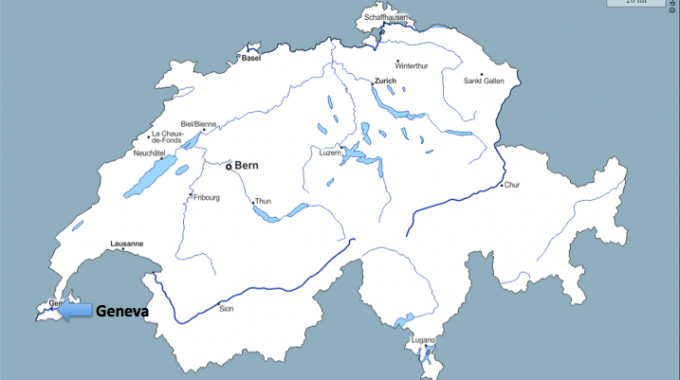
A European Journey #20 – Geneva (Switzerland)
Resurrected memory
As we are already reaching our twentieth stage, we will return to a location that we have visited earlier (see stage 2). The place I am referring to is the city of Geneva.
Last time, we were at the shores of Lake Geneva to explore the pre-Christian past of the city. But today we will explore a testimony of the rise of Christianity in the city. Let us walk from the shores of the lake to the Rue Rodolphe-Toepffer, which is one kilometre to the south. Here we discover a church topped with golden onion domes, which might catch us by surprise. Usually we find this style of architecture in the Eastern part of Europe. But surprisingly this church really is located in Geneva, and it is in fact a Russian Orthodox Church, named Cathédrale de l’exaltation de la Sainte-Croix (Cathedral of the exaltation of the Holy Cross).
Why is there a Russian Orthodox Church here in a city where the history is much more linked to Calvinism than to Eastern orthodoxy?
The story goes back to the ninetheen century. In 1859, the substantial Russian community in the city obtained the authorization from the city council to build their own cathedral. This was the first Russian Orthodox church in Protestant Switzerland. A prominent member of the Russian community in Switzerland was the sister of Tsar Alexander I, Grand-Duchess Anna Fyodorovna. She used her great wealth to finance the construction of the church. It was completed in 1866 and inaugurated during the following year.
But this place also has another story to tell. In fact, the link between this land and Christian worship goes even further back into history to the existence of another church built around the fifth century.
It is believed that Christianity started to spread in Geneva around the third century. The city didn’t escape the Germanic invasions that swept through the entire Western Roman Empire between the fourth and sixth century. But surprisingly, some of the tribes that entered the land had already converted to Christianity before their migration. And this had probably been the case with the Burgundy tribe that settled in the region of Geneva around the fifth century. A prominent Burgundian was a lady named Clotilde. As a believer, she married the Frankish king Clovis and thus played a key role in his conversion.
Her sister Sédeleube, who was also destined for a royal life, decided instead to become a nun. In her time, the relics of a Christian member of the Theban legion, Victor, had just been found in Solothurn (Switzerland). Victor had become celebrated for having decided to die instead of obeying the order from the Roman emperor to kill the believers in Switzerland. And so it was that another princess, Sédeleube, financed the construction of a church in this same place. It was dedicated to Saint-Victor and his relics were brought there.
Although located outside the city walls, this church became the city’s most important place of Christian worship for centuries to come. At the turn of the first millennium, the church of Saint-Victor became a priory of the Cistercian order. And as was commonly done in other Cistercian monasteries, the monks here also cultivated the surrounding lands (around the villages of Cartigny, Chancy, Laconnex and Troinex) to produce wine.
During the Middle Ages, other monasteries were founded in Geneva. They became the building blocks of the city, offering welfare, healthcare, education and anything else necessary for a society to thrive. But sadly, as they grew in prosperity and comfort, the monasteries also grew in immorality, which came to a climax at the end of the fifteenth century, some decades before the Reformation.
In the 1530s, the city of Geneva, which had embraced the Reformation, was besieged by the army of the neighbouring Roman Catholic Duchy of Savoy. In order to secure the surroundings of the city, the authorities destroyed the priory and took over its lands.
Sadly, one of the most precious memories of the city was now wiped out from the map.
In a time of history when many churches are desacralized, transformed into museums, libraries, restaurants, or even destroyed, we can be thankful that a little over three centuries after the destruction of the priory of Saint-Victor, a Cathedral was built on this land.
Today this location stands as a testimony of the internal struggles that the European church has experienced, principally through the Great Schism in the eleventh century and the Reformation in the sixteenth century. Nevertheless, especially since the end of World War II, dialogue is being restored between the various confessions. This clearly is a step towards the unity that Jesus had earnestly prayed for before his arrest and crucifixion (John 17:11)
See you next week somewhere else in Europe.
Cédric Placentino
Schuman Centre convener for Italian and French Europe
Follow A European Journey here.
Map: https://d-maps.com/index.php?lang=en

This Post Has 0 Comments